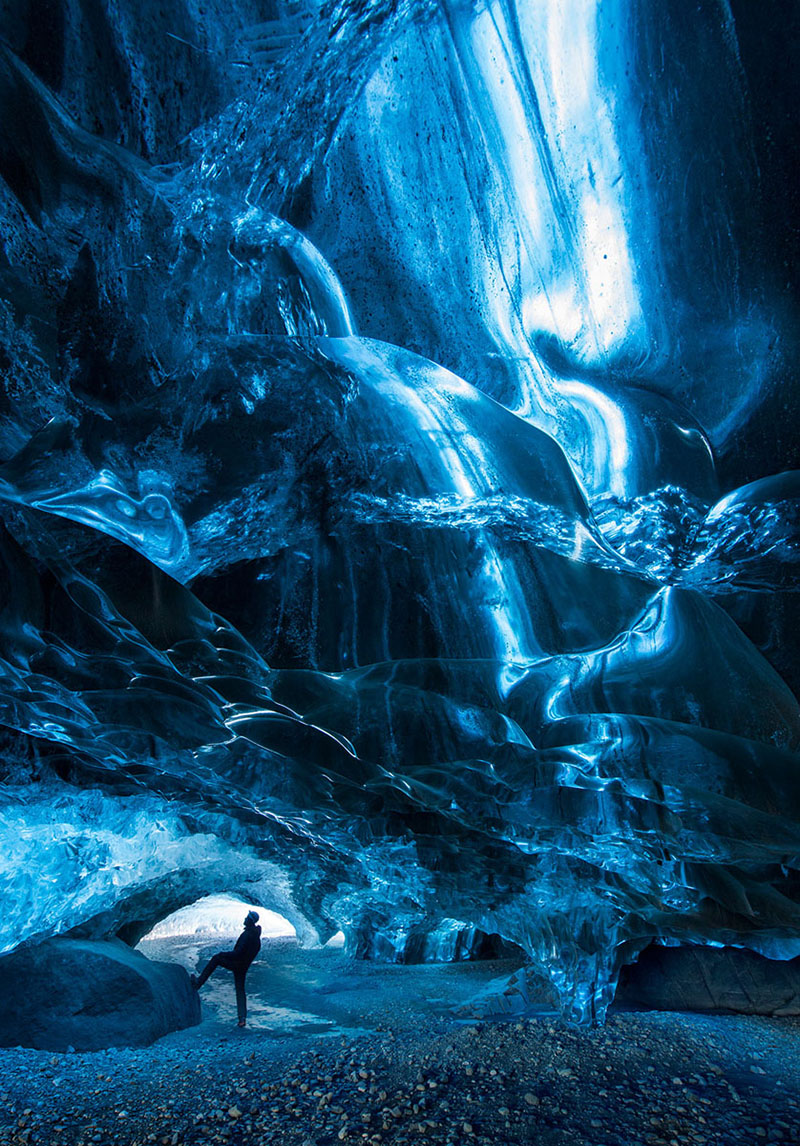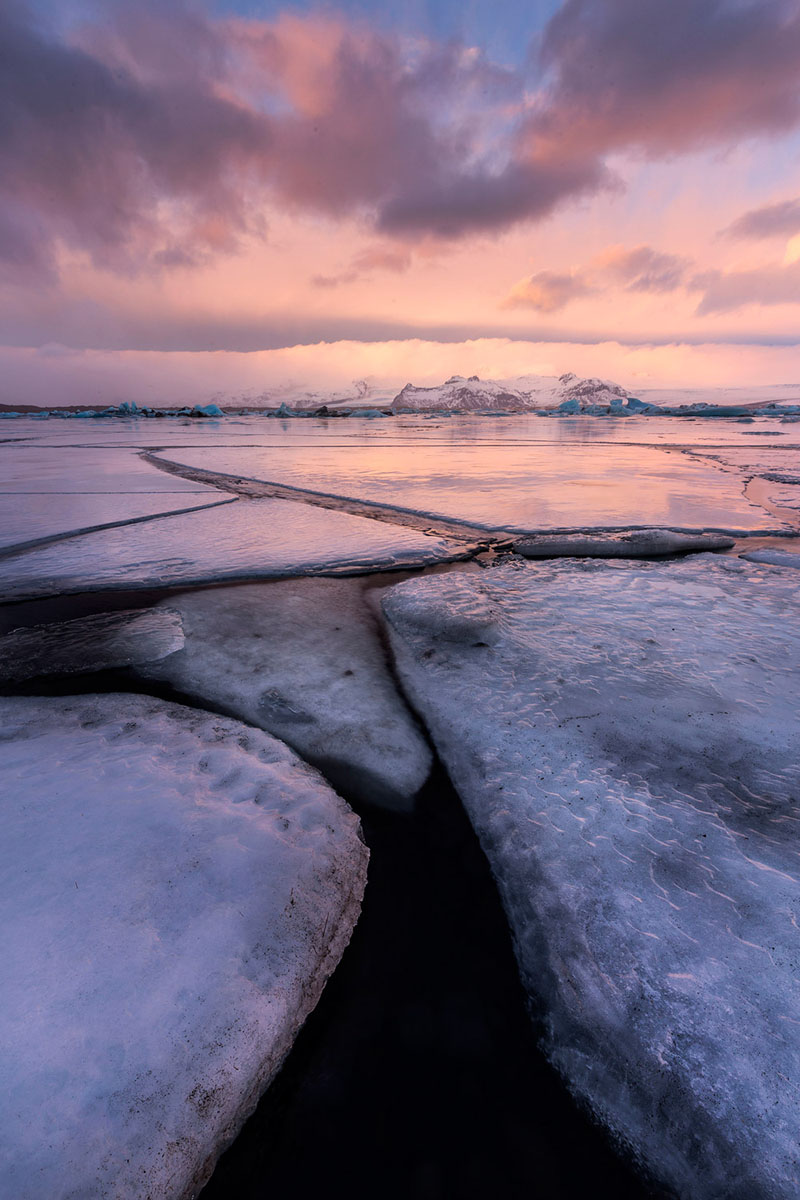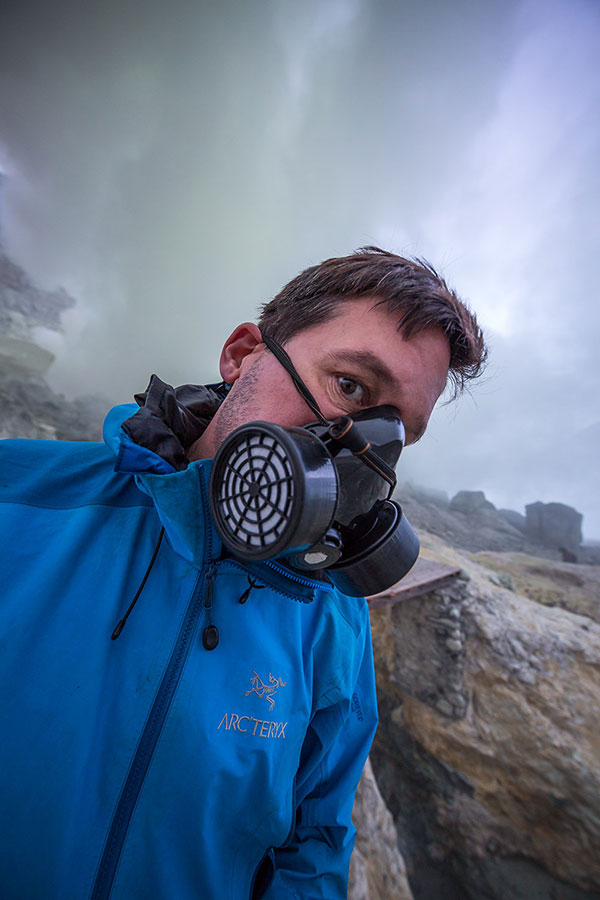Iceland is a popular destination for nature photographers, and for good reason: with beautiful mountain, coastal, and glacial scenery, it is an amazing place to photograph. But winter in particular is a special time in Iceland for photographers. On most cloudless nights, the aurora borealis lights up the winter sky as it dances and twists from one horizon to the other. Even during the day, the low-hanging winter sun casts long shadows and bathes the snowy landscape in beautiful, warm light.
The aurora borealis, or Northern Lights, is the premier attraction in Iceland in winter. The Northern Lights are produced when the Earth’s magnetosphere is disturbed by the solar wind, causing electrons to collide with the upper reaches of the atmosphere. To capture the aurora, you need dark, clear skies—and, of course, an active aurora! My favorite site for forecasting aurora activity in Iceland is Aurora Service. Ideally, you want to keep your exposures less than 15 or 30 seconds to capture the fast moving aurora; be prepared to use wide open apertures and high ISOs to let in enough light.
Related Course: How to Photograph the Night Sky
Another popular winter attraction are Iceland’s famous “ice caves” formed by water erosion inside glaciers. The caves are only accessible in winter, as they are unstable and potentially unsafe during warmer weather. These sculpted tunnels of blue ice are amazing to explore and photograph. You can find many ice cave guide services online, allowing you to join a group going to the caves, or better yet, to arrange a private tour for yourself.
Temperatures vary in Iceland in winter, with warm weather being possible. I spent two weeks there in January 2015: during the first week, it was below freezing and the landscape was covered in snow, while during the second week it was in the 50s Fahrenheit, and most of the snow melted. Still, most of the time, you will find temperatures below freezing, so dress accordingly, especially when spending long nights outside waiting for the aurora. The cold creates photographic opportunities not available during other times of the year, and can allow you to create unique images even at popular shooting areas.
Related Course: Winter Photography Tips: Exposure, Composition, and Details
Iceland is a great place to travel, with English widely spoken and plenty of undeveloped natural areas to explore. Even in winter, travel around Iceland is easy, making it the perfect winter photo destination. To see more Iceland photos, visit my website: Dreamscapes – Iceland.
About the author: World-renowned professional photographer and Tamron Image Master Ian Plant is a frequent contributor to several leading photo magazines and the author of numerous books and instructional videos. You can see more of Ian’s work at www.ianplant.com.
Have something to add to the story? Leave a comment or email editor@outdoorphotographyguide.com.





I enjoyed Iceland very much. It is my second favorite vacation that I have taken. Here are some of the shots I took while there. https://500px.com/dmiller68/galleries/iceland
Hi, I'm looking for information for a photography trip to Iceland in September. Would love to get advice and places to photograph in September.